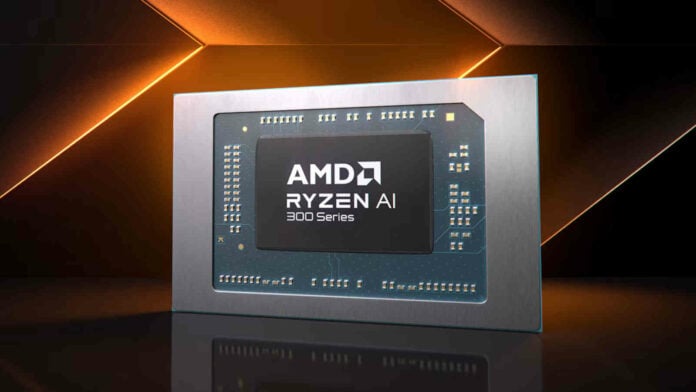Rumours suggest AMD will call its upcoming high-end Strix Halo APUs AI Max and AI Max+. Although this will undoubtedly confuse customers by bringing new nomenclature into its product line-up, they are poised to live up to their name, boasting up to 32 threads and a 40CU iGPU.
According to Golden Pig Upgrade, who previously leaked other AMD products, the Strix Halo processors will include the Ryzen AI Max 385, Ryzen AI Max 390, and Ryzen AI Max+ 395. These come configured as follows:
| CPU | Cores | Threads | GPU | NPU |
| Ryzen AI Max+ 395 | 16 | 32 | 40CU | XDNA 2 |
| Ryzen AI Max 390 | 12 | 24 | 40CU | XDNA 2 |
| Ryzen AI Max 385 | 8 | 16 | 32CU | XDNA 2 |
Unlike the Strix Point Ryzen AI 300 Series, Team Red will offer up to 16 Zen 5 cores alongside 40 RDNA 3.5 compute units. There is also an XDNA 2 NPU to accelerate AI tasks, though this one is likely to remain the same, with 50-ish TOPS of performance.
As you can expect, models above eight cores will use two CCDs (Core Complex Die), each containing up to eight Zen 5 cores. This means that gamers may want to opt for the Ryzen AI Max 385 to avoid a performance hit due to communication between CCDs.
Thanks to their improved GPUs, the Strix Halo APUs should be an excellent choice for gamers. With such an iGPU, we can expect similar or higher performance than the Radeon RX 7600, which packs 32 RDNA 3 compute units. At this level of performance, you won’t need a dedicated GPU, unless you rock a 4K screen or aim for the latest AAA titles. The leaker also claimed that this series supports up to 96GB of video memory – handy if AMD targets the workstation segment.
Like with Intel’s high-end Core Ultra 200HX Series, we don’t yet know the power configuration. This is an important metric alongside cooling, as both can make or break a mobile chip. Too much, and you have a hot-running power hog. Too little, and you have a starved chip that can’t unlock its full potential.
It seems AMD is experimenting with how many words it can shove inside its CPU names before confusion hits the roof. This makes it harder for customers searching for a specific chip recommended by friends or reviews. Thankfully, those who don’t follow the news can safely choose depending on the number, as it gets higher the faster the chip becomes. At least on paper.


